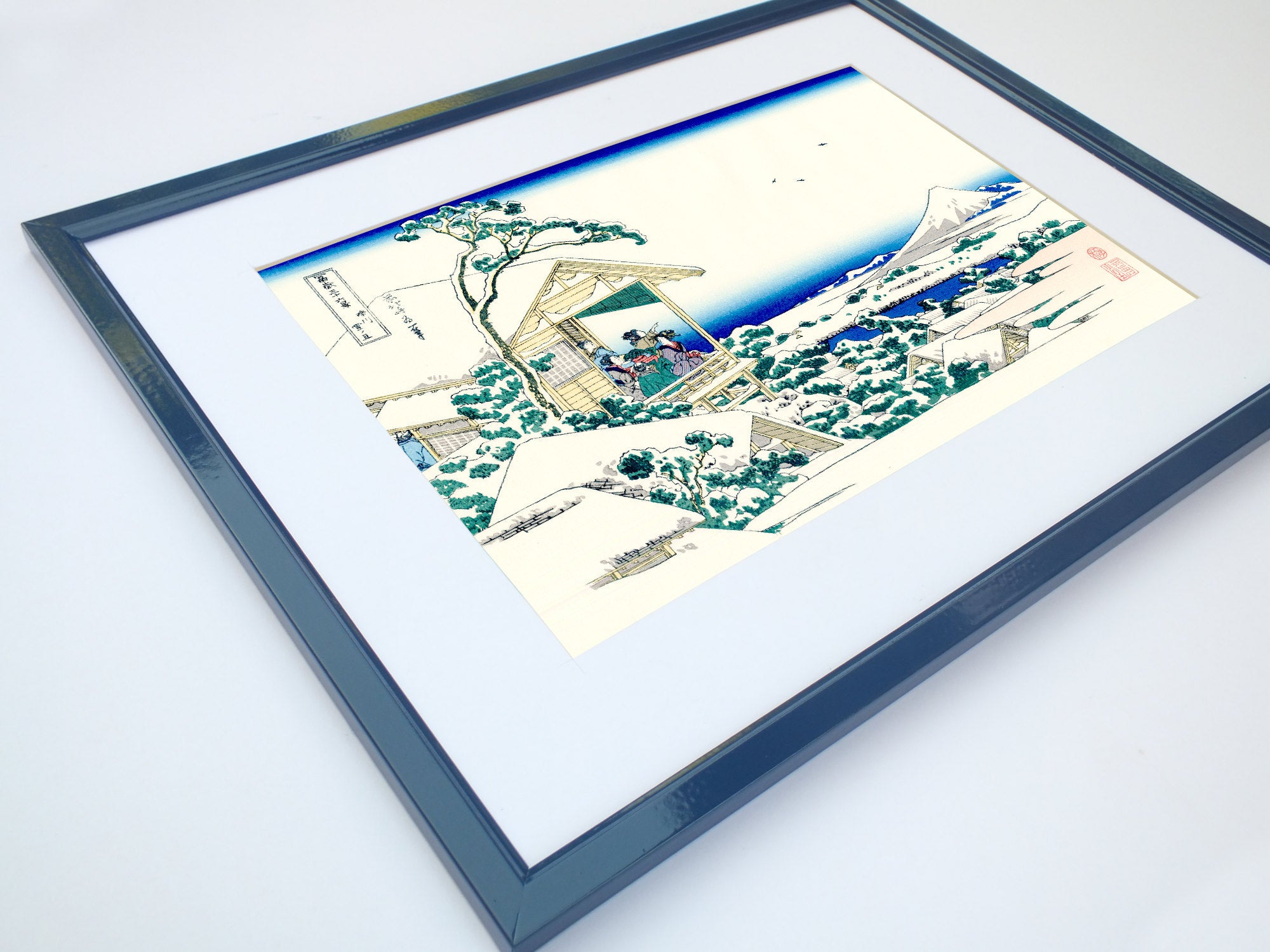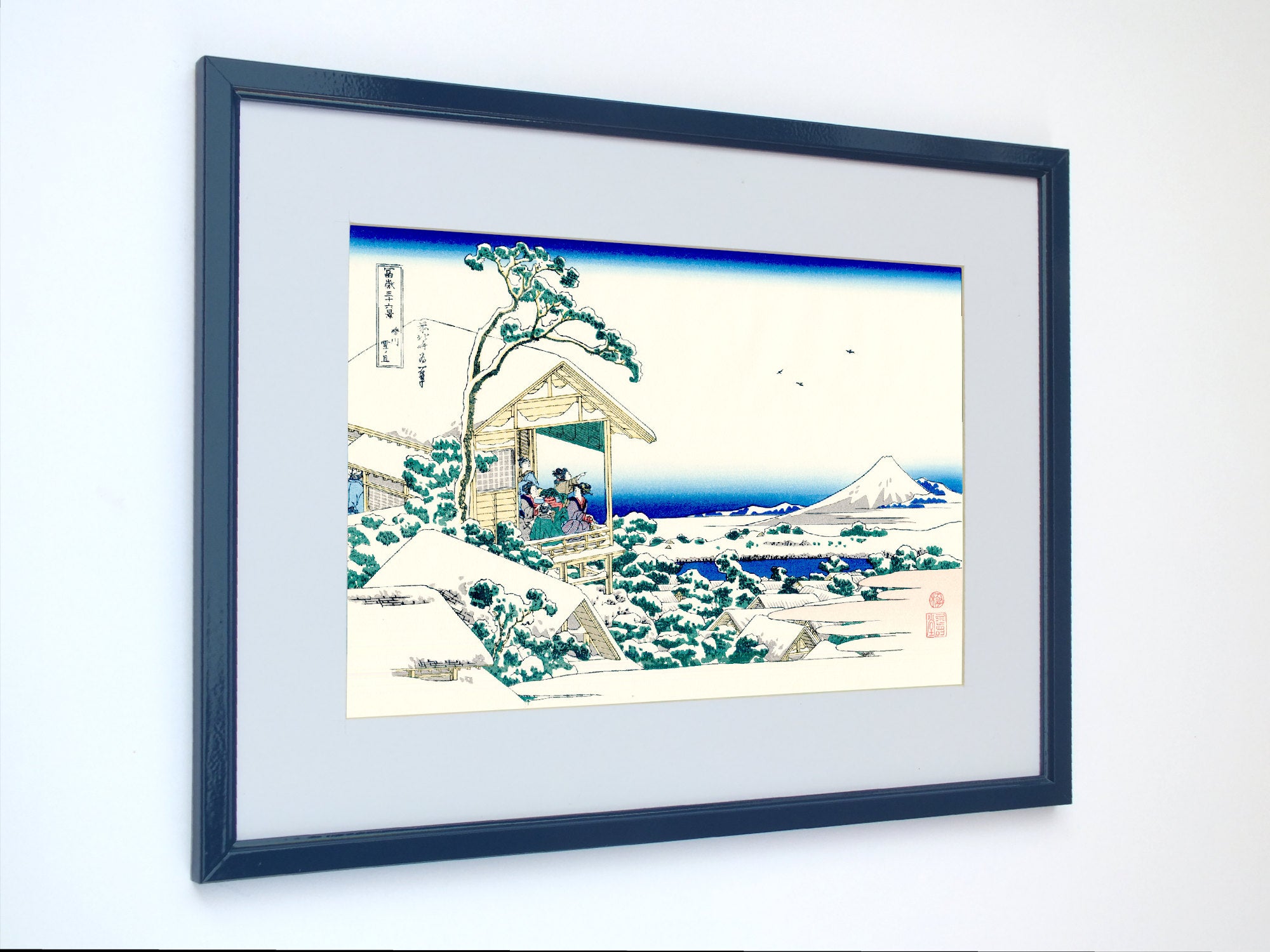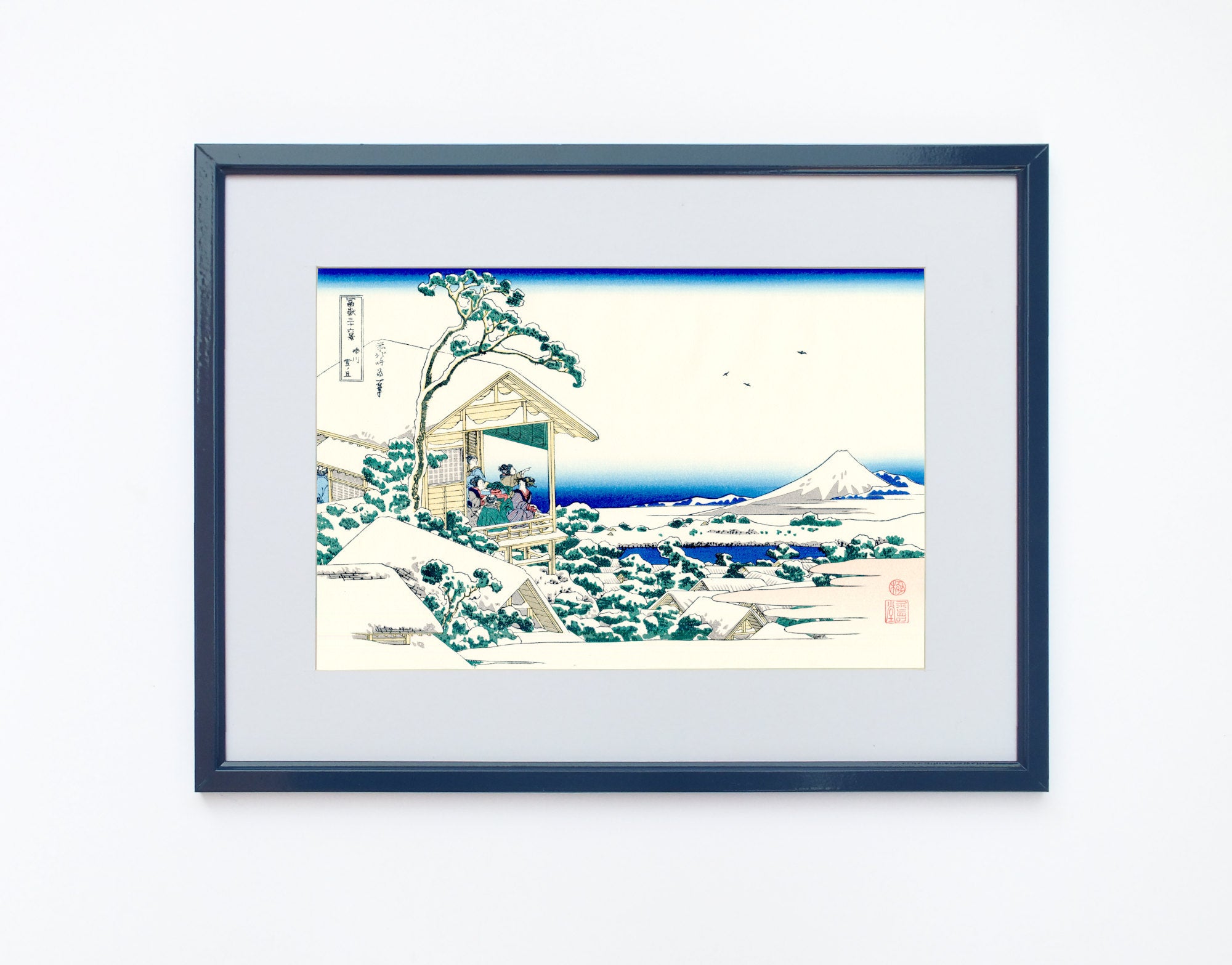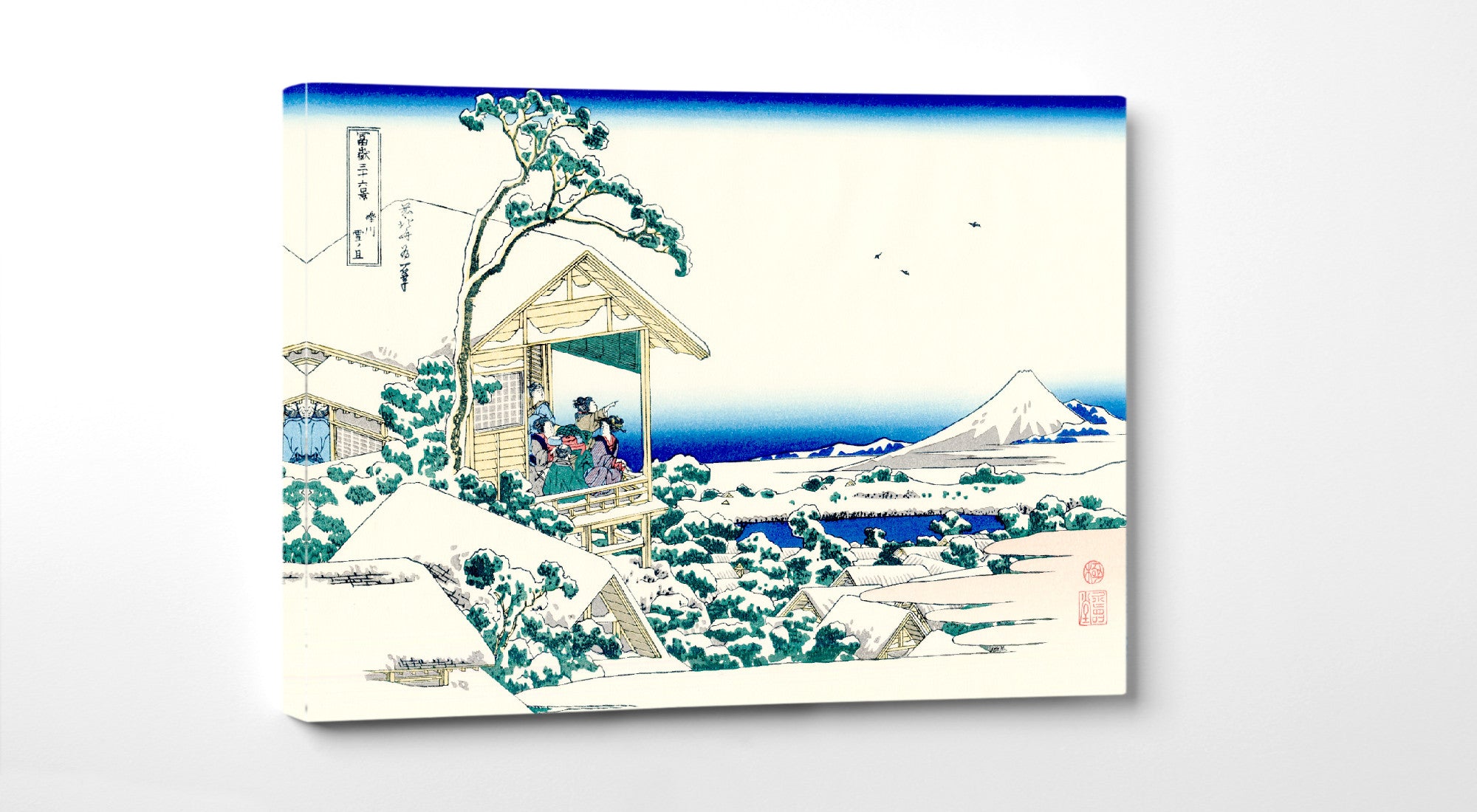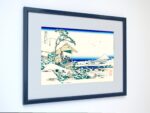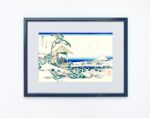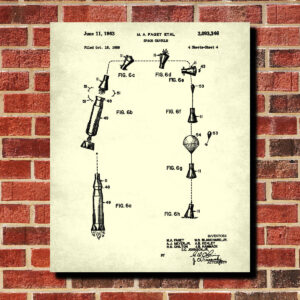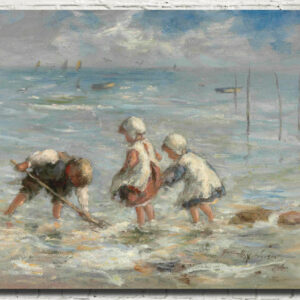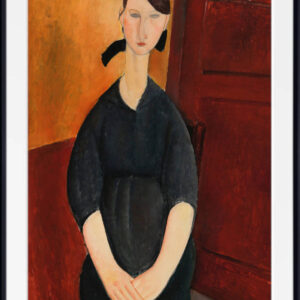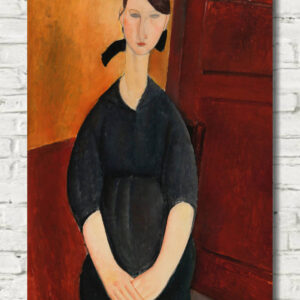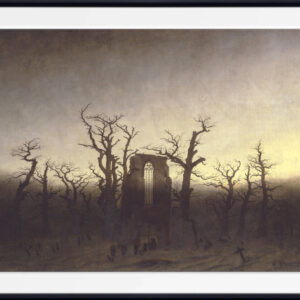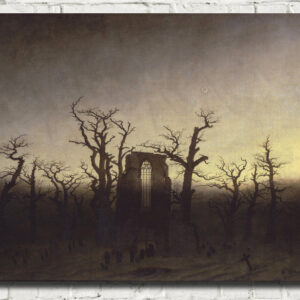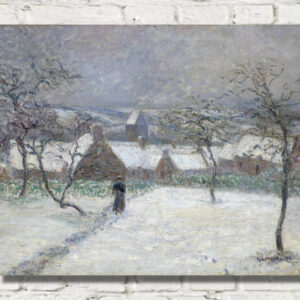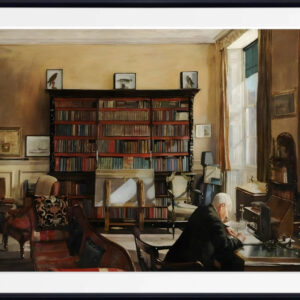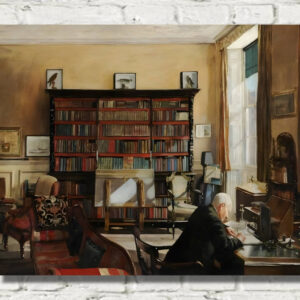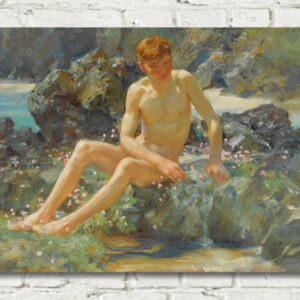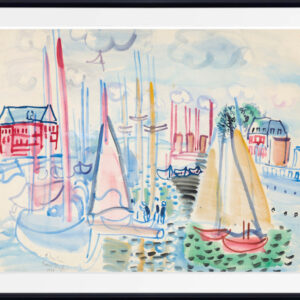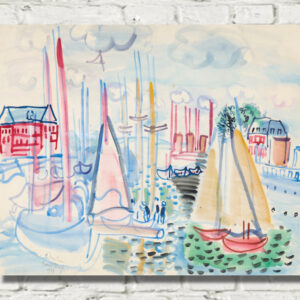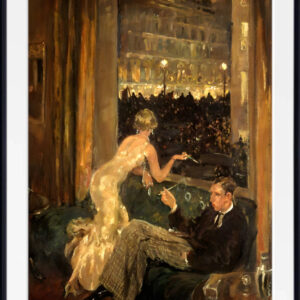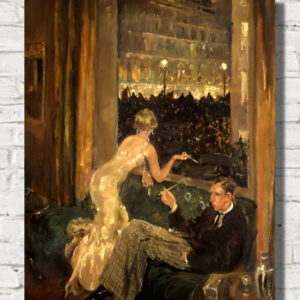36 Views of Mount Fuji, Tea house at Koishikawa, Katsushika Hokusai, Japanese Print
The picture shows a group of men and women on the terrace of a tea house, looking up at Mount Fuji. The tea house might appear to be an innocent location but, at the time Hokusai was working, a tea house was often a place for a couple to meet privately. Nevertheless, as everyone gazes at the transformed landscape, there is a suggestion of awe and wonder at the change brought about by the snowfall.
The print is one of a series of landscapes produced by Hokusai between 1830 and 1832 and collectively entitled Thirty-six Views of Mount Fuji. Hokusai produced these prints when his career was at its peak and the series includes some of his most famous works. David Hockney sited Hokusai’s prints of Mount Fuji as a major influence when he produced a series of pictures based on the weather in 1973, demonstrating Hokusai’s continuing relevance in the modern world.
Katsushika Hokusai was a Japanese artist, ukiyo-e painter and printmaker of the Edo period. Born in Edo (now Tokyo), Hokusai is best known as author of the woodblock print series Thirty-six Views of Mount Fuji (富嶽三十六景 Fugaku Sanjūroku-kei, c. 1831) which includes the internationally iconic print, The Great Wave off Kanagawa.
Hokusai created the “Thirty-Six Views” both as a response to a domestic travel boom and as part of a personal obsession with Mount Fuji. It was this series, specifically The Great Wave print and Fine Wind, Clear Morning, that secured Hokusai’s fame both in Japan and overseas. As historian Richard Lane concludes, “Indeed, if there is one work that made Hokusai’s name, both in Japan and abroad, it must be this monumental print-series”. While Hokusai’s work prior to this series is certainly important, it was not until this series that he gained broad recognition.
All prints are made using archival art stocks and UV pigment inks to give up to 200 years life. Choose from unframed, framed and mounted and canvas panel options.

